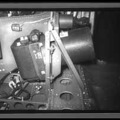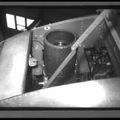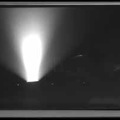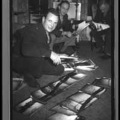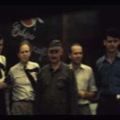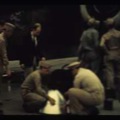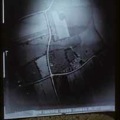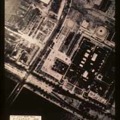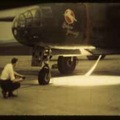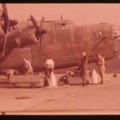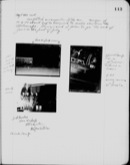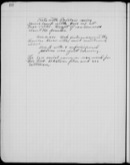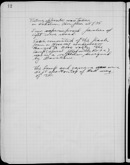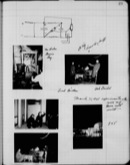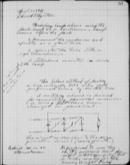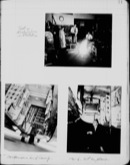Seeing in the Dark
by Joyce Bedi
By 1932, Edgerton had turned his experimental strobe apparatus into a commercial product. People outside MIT began to recognize the possibilities of Edgerton’s new tool. On the eve of World War II, the army asked Edgerton to build a strobe for night aerial reconnaissance photography.
In the summer of 1939, Maj. George W. Goddard, a veteran pilot of World War I, paid an unexpected call on Edgerton and his colleagues at the Strobe Lab. Goddard asked Edgerton if a strobe lamp could be built that would be powerful enough to take photographs at night from a height of a mile. Edgerton did some calculations and gave Goddard a tentative “yes.” “We can do that,” Doc said. “We haven’t got it in the house, but we can do that.”
The strobes used to photograph events in Boston Garden provided a technical foundation for Edgerton’s electronic flash for military night aerial photography. Our knowledge of almost seventy years ago indicated that the required kind of flash lamp could probably be built. But there was also a good probability that the lamp would explode during its first, and only, operation because of the intense heat and high pressure developed when the flash occurred. Even an optimist couldn’t feel too encouraged about the prospect of success.
But Edgerton and his team overcame these initial obstacles. The first experimental unit was mounted in an Army Air Forces B-18 bomber and successfully tested over Boston in April 1941. Further development and testing was done in collaboration with Wright Field (now Wright-Patterson Air Force Base) in Dayton, Ohio, before trials and training in England.
The system’s most famous test came on the evening of June 5, 1944, when the night reconnaissance planes took off for Normandy. They were followed shortly by a flying army in C-47s, headed for the D-Day invasion of France. The photographs taken that night showed no movement of enemy forces; the German troops were taken completely by surprise. “The clouds were down to about a thousand feet and the flash bombs couldn’t be used at all. They were designed to work at 10,000 feet,” Edgerton recalled. “So those pictures were useful, they were used all during the war.”
Knowing what an enemy is doing under cover of darkness is important in wartime. Before Doc developed his aerial flash, night reconnaissance photos were made with flash bombs, which are similar to the type of fireworks that explode with a boom and a blinding flash of white light. Flash bombs had a number of limitations: they were dangerous to handle; they used fuses that were preset for a specific altitudes, so pilots couldn’t navigate under cloud cover; and the noise from them often had citizens on the ground running for cover from what they believed was a bombing raid. The electronic flash took care of these shortcomings, though it created some new ones of its own. The main problem to be solved was how to separate the camera and flash as much as possible in the plane to prevent fogging of the film.
Further Reading
Harold Edgerton, Electronic Flash, Strobe (Cambridge: MIT Press, 1970/1992), pp. 286-294.
Harold E. Edgerton, “Night Aerial Photography,” Technology Review 29, no. 5 (March 1947): 273.
Nebraska Educational Telecommunications/NOVA, “Edgerton and His Incredible Seeing Machines,” 1985.
Harold E. Edgerton in World War II, 6.933 class project, 2000

